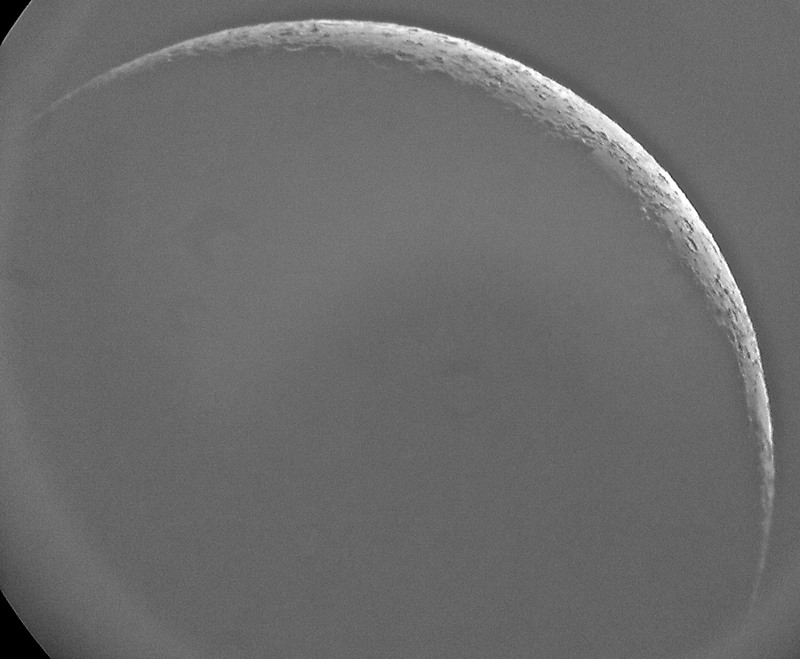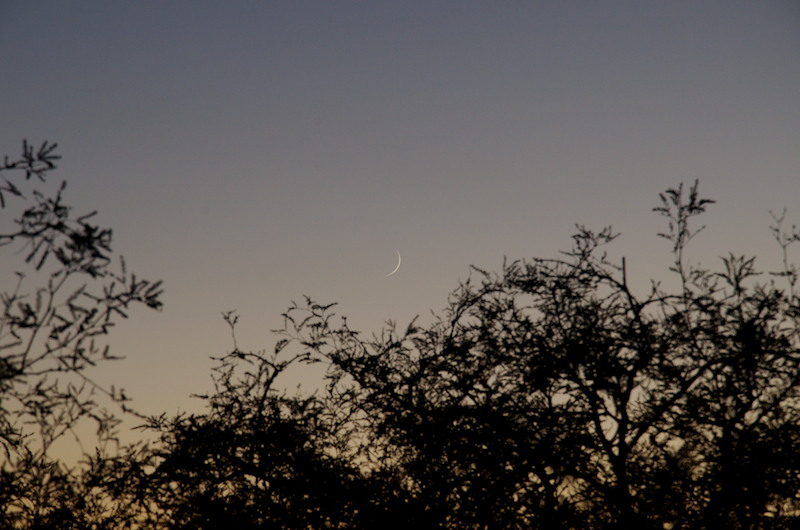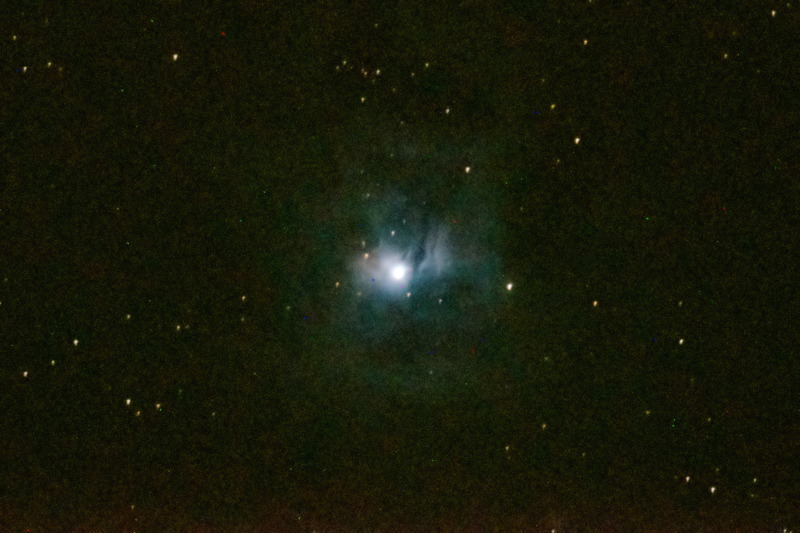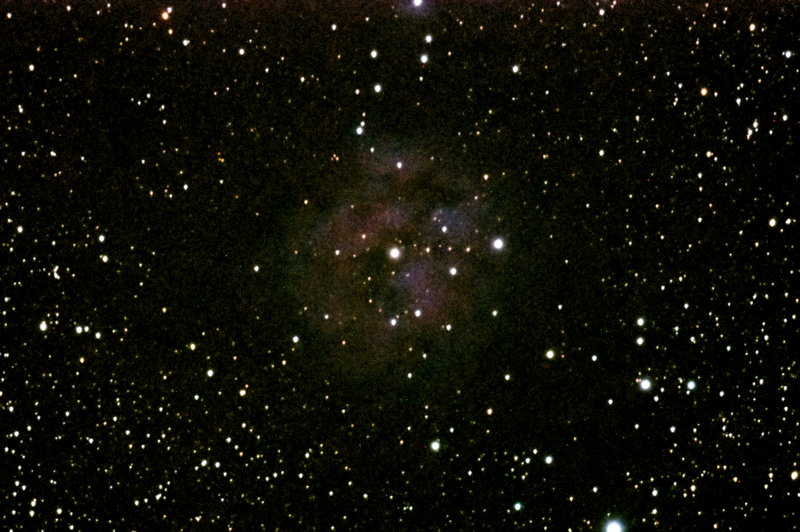
Crescent Moon, NGC7027, NGC7026,
NGC7023, Caldwell 19, NGC6946, Helix Nebula
Posted: 18 September 2012
The observatory was opened Monday, 17 September 2012, at 1824 MST, 91°F. There were some clouds, but the sky was clearing. At 1826 MST viewed a thin crescent moon, low in the western sky, 77X. I then attached the iPhone 4 using the Magnilux MX-1 afocal adapter and took this (slightly cropped) photograph:

This is what the moon looked like in the sky at 1847 MST from inside the observatory, taken with the D7000 DSLR, f/11, 1/30sec, ISO 500, 105mm:

I then did some lunar observing, 77X. The view was pretty good 20 minutes after sunset.
Beginning at 1900 MST, I began setting up for the night's DSO imaging. I planned to image several of the DSOs that were observed during the previous session. I mounted the camera at prime focus of the 8" LX200-ACF using the Off-Axis Guider (OAG), but as it turned out, only one of the images could be manually guided. For the others, the orientation of the guiding reticle eyepiece was such that I could not view any guide stars, so some image trailing is evident. At 1930 MST, took a focus test exposure of Deneb using the Bahtinov Mask, locked the focus, and SYNCed on Deneb (as the DSOs to be imaged were in that portion of the sky). I began DSO imaging at 1933 MST. This is NGC7027, a very small but bright planetary nebula, 30 seconds, ISO 500, cropped:

This is NGC7026, another small planetary nebula, 1 minute, ISO 6400, cropped:

Next was NGC7023, a faint nebula. This is a 2 minute, ISO 6400, exposure, cropped:

This is Caldwell 19, a large but faint nebula, guided, 5 minutes, ISO 6400, slightly cropped:

One galaxy was imaged this night: NGC6946, a faint but large one. This is a 3 minute, ISO 6400, slightly cropped, image:

My last DSO target for the night would be the Helix Nebula. I wanted to try imaging using an O-III filter. Unfortunately, I can not use the OAG with filters so I had to remove the OAG and do unguided exposures at prime focus using a visual back. At 2117 MST, did a focus test exposure on the star Fomalhaut using the Bahtinov Mask, locked the focus, and did a SYNC on the star. I then waited for the Helix Nebula to rise a little higher in the southern sky. I began imaging it at 2135 MST. The already faint nebula was made fainter by using the filter, so the prime focus images were rather underexposed. I added the focal reducer, did another focus test on Fomalhaut, and then did some imaging of the Helix Nebula. This is a 3 minute, ISO 6400, exposure, slightly cropped:

Compare the above O-III filtered image above with the image of the Helix Nebula I captured unfiltered on 2 November 2010.
The observatory was closed at 2227 MST, 71°F.
Comments are welcome; use the Comments section below, or you can Email Me. Thanks.
Go to the previous report.
Return to the Cassiopeia Observatory Welcome Page.